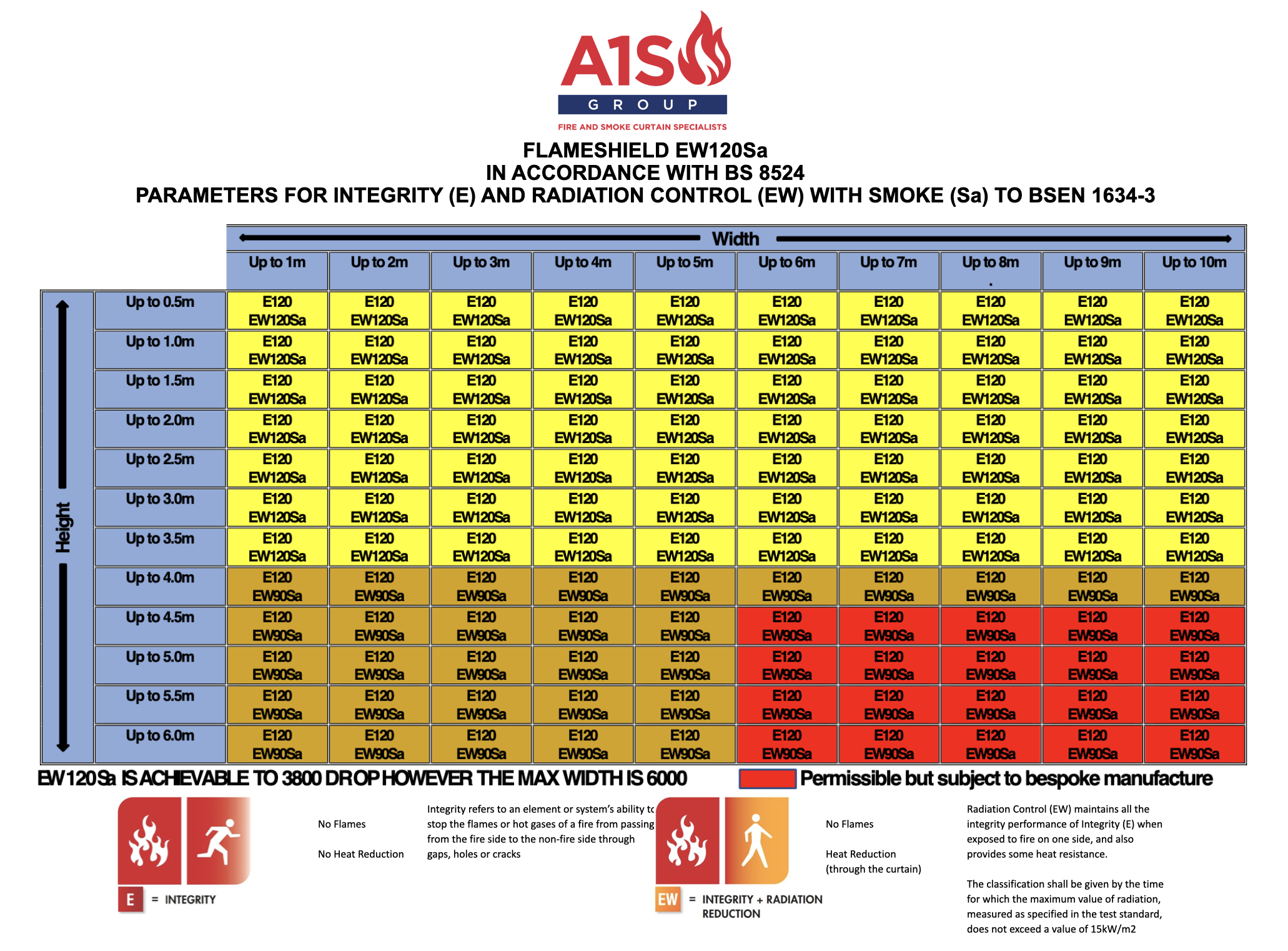Flameshield fire curtains now tested to 90 minutes for flexible (timber and stud) structures
Flameshield fire curtains now tested to 90 minutes for flexible (timber and stud) structures.
When installing fire and smoke curtains, it is important to understand that different fire tests are applicable for different structures. A fire test is required for rigid structures and a separate fire test would be required for fitting to flexible structures. Contained within any BS EN 1634-1 fire test document will be the following statement under the Supporting Construction Section. “The fire resistance of a door assembly tested in one form of standard supporting construction may or not apply when it is mounted in other types of construction. Generally, the rigid and flexible types are not interchangeable. “ This is taken from BS EN 1634‑1:2014+A1:2018 13.5.1 General.
Whether you are extending fire curtains as per BS EN 15269-11 Extended Applications for Fire Curtains or a UK assessment to general principles outlined in BS EN 15725, the guidance couldn’t be clearer. It is NOT POSSIBLE without an additional full scale fire test to fit a fire curtain to a flexible i.e. stud or timber structure. Fitting fire and smoke curtains to such flexible structures when the product has only been fire tested to rigid structures (i.e. brick) is potentially dangerous and irresponsible as well as contrary to the BS EN 1634-1 test standard enshrined within UK Building Regulations.
BS EN 15269-11 2018 (Part II Fire Resistance for operable fabric curtains) Page 32 (J1.2)
A1 had previously tested to a flexible stud system and achieved 60 minutes, but with increasing requests to achieve 90 minutes for a flexible structure we carried out a successful full scale fire test, Warrington reference 525487.
If you have any timber or stud system on your project, we would recommend that you ALWAYS ask to see the required fire test documentation showing testing to stud. Without this test evidence, you are running a genuine commercial risk that Building Control will not approve your installation; worse still you are risking that the fire curtain will not be fit for purpose. For further information on this test contact info@a1sgroup.com
A1 Shutters Limited assume no responsibility or liability for any errors or omissions in the content of this site. The information contained in this site is provided on an "as is" basis with no guarantees of completeness, accuracy, usefulness or timeliness. Analysis of product properties and their suitability for any given application should always be undertaken and confirmed by competent professionals.
The trouble with insulated fire curtains
It wouldn’t be an exaggeration to say that five times a week, a phone call or a fire strategy report and a fire curtain or fire curtains and smoke curtain specification lands on my desk with the requirement for insulated fire curtains or fire curtains tested with an insulation zone. From Building Control in Southampton, to an architectural practice in Singapore, the same question comes up time and time again.
“Do you manufacture fire curtains with 60 minutes, 90 minutes or 120 minutes integrity AND insulation? Or what are the EIs of your Flameshield fire curtain range?
Within overall fire resistance criteria, where E = Integrity and I = Insulation, the requirement is for EI 30, EI 60, EI 90 or EI 120. Now I know what is trying to be achieved - namely a fire curtain that will provide 30-120 minute integrity and protection from spread of flames and hot gases (E 120), coupled with defined measurements to prevent fire spread by spontaneous non-piloted combustion and radiation (total heat flux) and to protect people and property against exposure to high temperatures and associated risks.
The answer is that none of the leading Fire Curtain UK manufacturers produce an insulated fire curtain or a fire curtain with insulation properties to EI 30.60.90 and 120 minutes. They certainly should NOT be advertising such performance characteristics. Insulation properties (i.e. EI) are simply not available with fire curtains in the UK. If you think otherwise, please feel free to touch a millimetre thin fire curtain on it’s surface after 60 or 120 minutes. (And apologies to our European friends who still use this term although predominantly for insulating zone, or EI1 (tested at 25mm) and EI2 (tested at 100mm) this is a UK-centric article.) The only UK exception to this would be in conjunction with a sprinkler system but nobody is further than a desk top appraisal on this.
The misnomer associated with an insulated fire curtain was worsened with the misconceived introduction of an insulating zone for fire curtains in PAS 121 which mercifully was confined to the annals of fire curtain history and totally scrapped in July 2013 so the confusion is understandable. Updated and precise guidance is now available in BS 8524-2.
The reasons why are common sense, but do not worry about your project, there is good news and a documented alternative and clear guidance as to the use of radiation and radiation tenability data (instead of insulation) in the UK’s preeminent fire curtain standard BS 8524-2, Active fire curtain barrier assemblies – Part 2:Code of Practice for Application, Installation and Maintenance.
Page 13, 5.3.1 states that “Barrier assemblies replace static partitions and therefore have to descend within a clear space. Therefore the problems of surface temperatures DO NOT APPLY, but integrity, radiation and occupant tenability is still relevant.” A further note states that “Where it is impracticable to fix or hang thermocouples to the surface of the test specimen, as it would prevent the intumescent process working, the insulation performance of the specimen cannot be determined and the barrier assembly can only be tested for integrity and radiation.”
5.3.2.1 of BS 8524-2 continues, where radiated heat flux as opposed to insulation, is to be used to assess whether conditions are tenable, three distinct approaches should be used :
simplified approach for horizontal routes in dwellings (which can be explained based on the guidance in BS 8524)
fully fire engineered approach for horizontal escape routes (which I am not qualified to explain) but the guidance is on page 25 of BS 8524-2 with the important data and matrices on subsequent pages.
fully fire engineered approach for all other applications
I should definitely draw your attention to two pages of data B1 and B2 which provides permitted radiation performance, R maxA and accounts for minimum separation between escaping occupants and barrier assembly, d separation and speed of escaping occupants, v occupants. These indicate the performance criteria required from a fire curtain to achieve the requisite tenability. The definitive conclusion is that if your project requires active barrier fire curtains to form an exit route, they will definitively require testing to E for integrity and W for radiation so EW 30/60/90/120 not EI.
BS EN 13501-2 2016 also provisions for products to be classified as E or EW without insulation.
5.22.1 General states that, “Classification for integrity (E) shall be according to whether or not the element is also classified for insulation (I, I1 or I2). Where an element is classified both for integrity and insulation, the value of integrity is that determined by whichever of the three aspects fails first. Where an element is classified without an insulation classification (i.e. for the classifications E, EW, RE and REW), the value of integrity is that determined by the time to failure of only the cracks/openings or sustained flaming aspects, whichever fails first.
All A1S Group fire curtains are actually witness sampled, cyclic tested and furnace tested by Warrington Exova and within the test documentation is key radiation data, particularly kw/m2 at fifteen minutes and time elapsed before radiation reaches 15 kw/m2.
AS A NOTE THE A1S GROUP HAVE NOW SUCCESSFULLY TESTED THE UK’S FIRST EW120 CURTAIN, TO C1 CLASS WITH WARRINGTON FIRE WHICH ACHIEVED A UK INDUSTRY LOW 2.62 KW/M2 AT 15 MINUTES. 6.30 KW/M2 AT 1 HOUR AND 10.71 KW/M2 AT 120 MINUTES.
Hopefully, this article will complement the information you as a fire engineer or architectural specifier require for using the correct radiation data instead of the now defunct and highly confusing insulation data. Extended data sets including radiation minute readings between 0-120 are available on request to help establish which Flameshield fire curtain or indeed whether our product is even suitable for your application.
For details of A1S Group industry leading fire curtain radiation readings, must have test data and any general enquiries, please contact info@a1sgroup.com
A1 Shutters Limited assume no responsibility or liability for any errors or omissions in the content of this site. The information contained in this site is provided on an "as is" basis with no guarantees of completeness, accuracy, usefulness or timeliness. Analysis of product properties and their suitability for any given application should always be undertaken and confirmed by competent professionals.
The Flameshield EW120(Sa) Fire Curtain – Market Leading Fire Performance from the A1S Group
Is the Flameshield EW120 (Sa) from the A1S Group the UK’s leading performance fire curtain?
When you consider its permissible parameters, smoke testing, integrity and of course market leading radiation control, is the Flameshield EW120 (Sa) from the A1S Group the UK’s leading performance fire curtain? We think definitively yes. Certainly, with the life critical safety benefits of higher radiation control, we thought a thorough comparison between the UK’s leading products was more than merited. So we decided to take the Flameshield EW120 Sa for a “test drive” against other fire curtain manufacturer’s leading radiation performance single vertical curtains. The problem is only one other UK manufacturer appears to have completed the required test run AND responsibly published data and parameters in the public domain. Our view is that this transparency is fundamental in allowing fire professionals to make informed and sometimes life critical safety calculations.
Of course, both products have been fire tested by Warrington. They are tested in accordance with the “pass/fail annexes of BS 8524-1”, so as well as the fire test, response speed, impact testing, elevated motor testing, reliability and durability and testing of ancillaries are passed. Having completed the test run, the Flameshield EW120 is pending third party certification from an alternative scheme to IFC’s SDI 11-02 (8524-1 which is withdrawn) to comply with third party specification requirements when required.
It is the radiation performance from the actual fire testing where the Flameshield EW120 really starts to accelerate away. It is important to understand, whilst fire test documents must state radiation data, radiation performance diminishes as the curtain size increases beyond the original tested size so additional testing and assessment is required.
Beyond the Flameshield EW120 from the A1S Group, there appear to be no alternative published sizes for EW 120 – obviously because radiation levels breached 15kw/m2 well before 120 minutes. (Fact checked as of 08/09/2022) The only current and comparative data shows maximum published parameters for EW 90 at 2000mm x 7000mm or 3000mm x 3000mm, or 10000mm x 2000mm. So, the reality is no other company can legitimately manufacture a fire curtain to 3500 x 2200 for even EW90 let alone EW120.
Because the Flameshield EW120 only reached 10.7kw/m2 after 120 minutes – so nowhere near the limit of 15kw/m2, the sizes listed below are not just market leading, they create significantly improved tenability.
The importance is, this kind of radiation differential could potentially save occupant and building user lives, provide substantially more tenable environments for emergency services, and dramatically reduce thermal degradation of building fabrics.
There are many fire curtain applications where it is vital to assess the ability of “a separating element”, when exposed to fire on one side, to restrict the radiation on the “unexposed” side. The purpose of this blog is not to explain where and why there is a requirement for radiation control, that is the province of qualified fire strategists; rather it is designed to highlight the comparative data as published by the two leading radiation performance product manufacturers in the UK.
The above data is based on our EW120 fire test originally carried out on 01/01/2018. To reiterate, because tested sizes are approximately 2400mm wide by 2600mm high, (dictated by the size of Warrington’s test furnace) to compliantly manufacture and install larger products requires further test evidence. A small-scale test (Warrington reference 504026) was subsequently carried out as was a smoke leakage test Warrington reference WYC 504211), allowing Warrington to produce an Extended Size Assessment to include permissible substrates including steel and importantly permissible increased parameters for integrity, radiation, and smoke. Our Extended Size Assessment is Warrington reference 520457. The document cites the methodology under BS EN 15254-4:2018 and the calculations required to determine radiation intensity at larger sizes. We have published the results in matrix form below.
The above matrix describes radiation performance to higher levels and significantly larger parameters than anything else available (current as of 01/09/2022) in the UK; and because smoke seals were burnt during Flameshield fire testing our extended report cites, use of such seals at the published extended sizes to comply with the requirements of BS EN 1634-3. As a company we are getting significant and increasing interest from the wider fire community around the Flameshield EW120 (Sa). Specifications and drawings of this product are readily available for architects, fire strategists, design managers, quantity surveyors and Building Control at: https://firecurtain.co.uk/
For any other questions or comments on the Flameshield EW120(Sa) please contact
Our Sales Team on 01204 383839 or email sales@a1sgroup.com
The Difference Between A1S Group Fire and Smoke Curtains and Fire Shutters.
The Difference Between A1S Group Fire and Smoke Curtains and Fire Shutters.
For those not used to procuring these two distinct fire rated products, we thought it would be helpful to post a simple guide. Of course, procurement of fire curtains, fire and smoke curtains, smoke curtains and fire shutters can be a complex area. We advise that guidance is always taken from your Building Control, Design Team, and Fire Strategist – and of course with our significant project experience, we are always here to help.
1) Components
The first obvious difference between fabric fire curtains, fire and smoke curtains, smoke “only” curtains and fire shutters is the component build. Whilst both product ranges share commonalities, particularly as both are motorised and are generally activated by an alarm signal and generally descend within guide channels, a fire shutter is manufactured from, in our case 76mm curved solid galvanised steel lath. Curtains are manufactured from a range of tested fabrics, usually a heavyweight glass fabric which is reinforced with stainless steel wire, coated with a formulated fire-retardant aluminium pigmented polyurethane or intumescent fire-retardant silicon elastomer .
A1S Group fire curtain and fire shutter specifications and drawings are available at https://a1sgroup.com/specifications-and-drawings
2) Performance
Fire shutters are available with 1-, 2-, and 4-hour integrity and have been fire tested to BSEN 1634-1. Fire curtains are available with 1- and 2-hour integrity and additionally our Flameshield fire curtain range provides 85 minutes before breaching 15 kw/m2 radiation for the unexposed side of a curtain. Neither product is sold with insulating properties. Fire curtains provide smoke compliance to BS EN 1634-3 with the inclusion of specialist smoke seals and as such make the product suitable for protecting means of escape. Smoke seals are burnt as part of the fire testing to confirm integrity of the whole product. Smoke compliance is not available with a fire shutter range because of ingress between the curved lath section. A fire shutter can provide a degree of physical security when in the closed position. Fire and smoke curtains are designed to sit within their headbox and only become operable during fire conditions or on receipt of an alarm signal. For more detail, please see :
Link: https://firecurtain.co.uk/
Link: https://fireshutter.co.uk/
3) Standards
It is a legal requirement that fire shutters are manufactured under harmonised European standard BS EN 16034 and BS EN 13241. Our Flameshield range benefits from being the first tested to multiple substrates in the UK under this now required CE markable, and is approved for masonry, blockwork, structural steel and flexible stud systems.
Our Flameshield fire curtains are offered to BS 8524-1, BS EN 1634-1 as well as BS EN 1634-3 and we are finalising CE marking as despite preference for BS 8524 by many Building Controls in the UK the general direction of travel is for a CE marked fire curtain under BS EN 16034. Smoke “only” curtains are offered under the harmonised European Standard BS EN 12101. All of our fire testing is carried out by Warrington Fire, and we hold third party certification for both manufacture of fire curtains and installation of fire and smoke curtains under International Fire Consultants SDI 05 and SDP -11 02 Scheme.
4) Design
We host all indicative drawings across our product range at : https://a1sgroup.com/specifications-and-drawings
Both fire curtains and fire shutters benefit from internal tubular motors contained neatly within the head box. Fire shutters can also have external motors, generally where larger sizes are required. It is readily noticeable that fire shutters have larger head boxes which give fire curtains the edge when headroom is restricted. Permissible parameters for both ranges are available above. Likewise, both product ranges are available to be fitted to your structure either face fix or reveal fix. Indicative product weights are 22kg per linear metre for single vertical fire curtains, 36kg per linear metre for overlapping systems, and 35kg/m2 for fire shutters. Our testing documentation requires that all designed structures are load bearing to the above and have a fire performance equal to or greater than the performance required by our product. Fire curtains are also available as “horizontal” products to protect atria, light wells, escalators, and stairs from fire. Extended applications to BS 15269-10 and BS 15269-11 as well as product assessments from Warrington give further detail on structural requirements.
5) Applications
Fire and smoke curtains and fire shutters should be specified by trained and competent professionals. Broadly speaking fire shutters are used to provide integrity when there are openings in walls, for boundary protection and for compartmentation. Smoke only curtains are used to channel smoke, usually in conjunction with a ventilation system. Fire and smoke curtains can be used for, protected means of escape, egress and corridor separation, boundary protection, compartmentation, openings in walls and lift and lift lobbies.
For further information on our range of fire curtains, fire and smoke curtains and fire shutters, or any costing requirements, please contact :
info@a1sgroup.com
A1 Shutters Limited assume no responsibility or liability for any errors or omissions in the content of this site. The information contained in this site is provided on an "as is" basis with no guarantees of completeness, accuracy, usefulness or timeliness. Analysis of product properties and their suitability for any given application should always be undertaken and confirmed by competent professionals.
Still punching above our weight as A1S Invests In a C N C Punch System
Continuing our 2022 production investment, and targeted campaign to maintain the best fire and smoke curtain lead times in the UK.
A1S Invests In a C N C Punch System in Push to Maintain Sparkling Lead Times
Continuing our 2022 production investment, and targeted campaign to maintain the best fire curtain and smoke curtain lead times in the UK, the A1S Group has invested in an Amada Vipros 2510 King. Working in conjunction with Jetcam programming software we are now able to produce millimetre perfect head boxes, end guides, end plates, joining strips and a plethora of bracketry in an unlimited range of batch sizes, all with countersinking options. The state of the art punch system is to be utilised to manufacture metal works for third party certified Flameshield fire curtain and smoke curtains to BS 8524-1, Flameshield fire and smoke curtains to BSEN 1634-1, CE marked fire curtains to BS EN 16034 and our range of Smokeshield smoke curtains to BS EN 12101-1+A1:2005.
For information on our complete range of Flameshield fire curtains, fire and smoke curtains, and Smokeshield smoke curtains please email Paul Caldwell-Jones on paul@a1sgroup.com
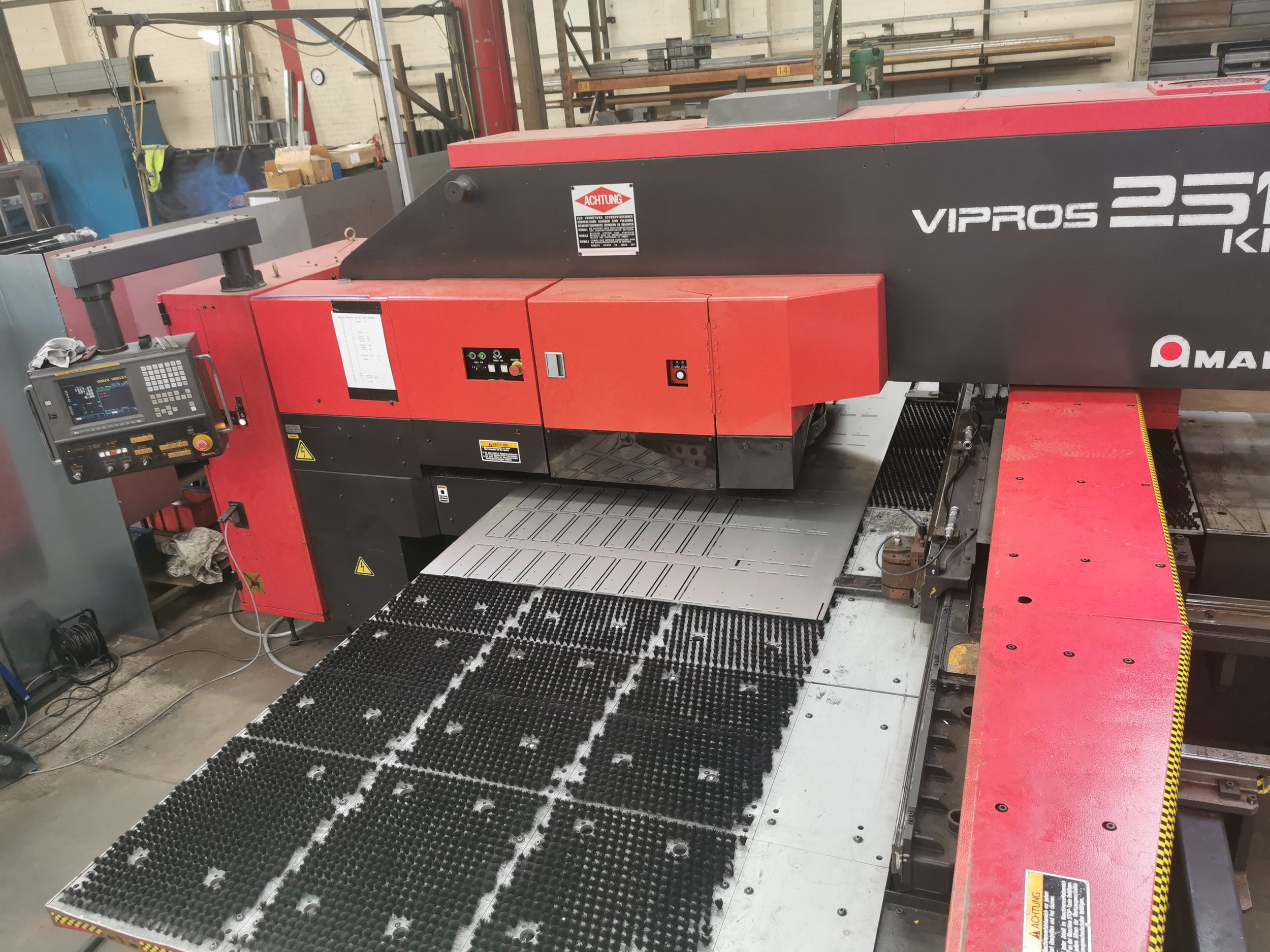
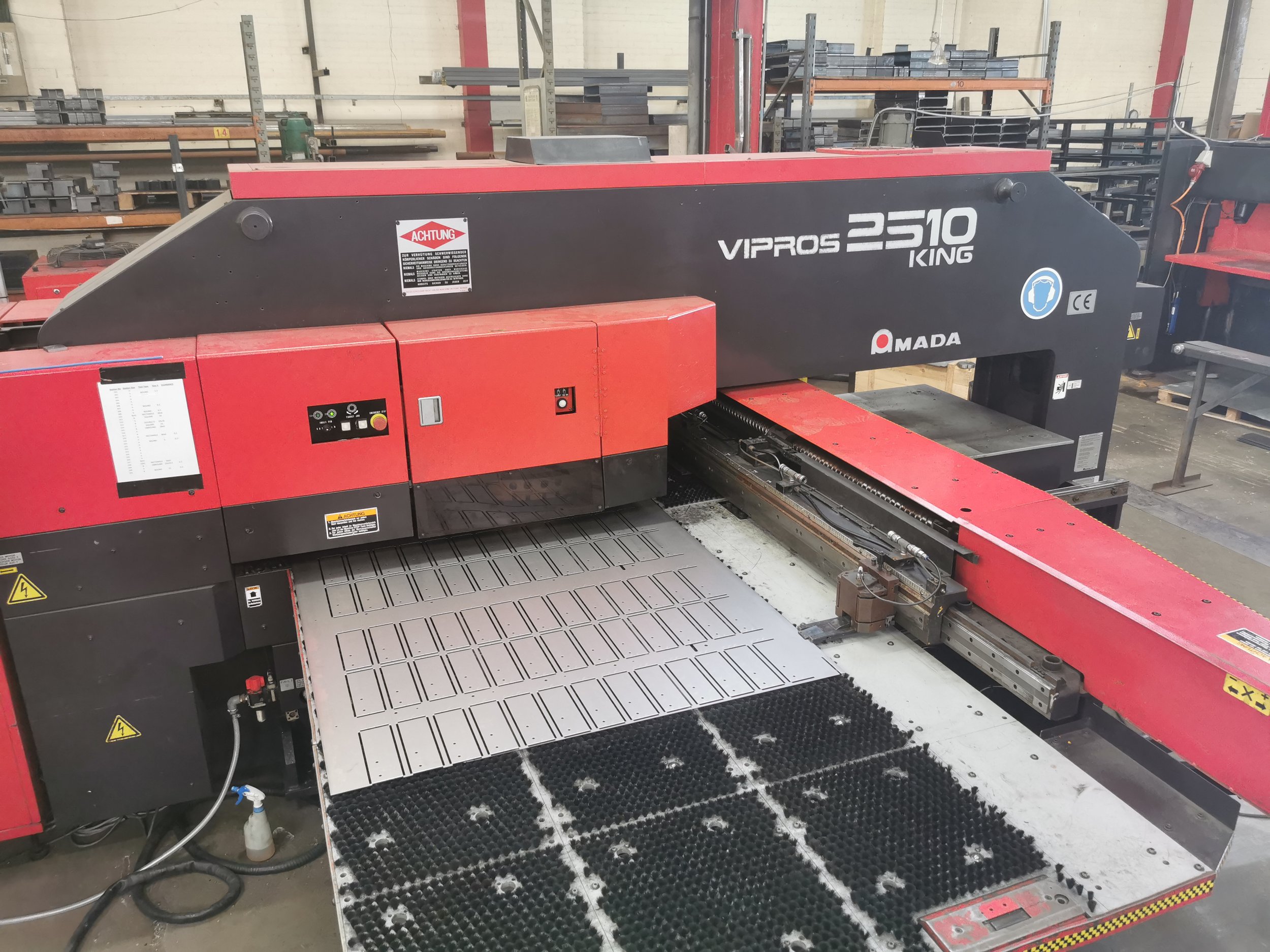

A1S Group Delighted to win Four Landmark Projects
In terms of iconic projects, we really are spoilt for choice this month with what is further recognition for our Flameshield fire shutter and fire curtain range.
In terms of iconic projects, we really are spoilt for choice this month with what is further recognition for our Flameshield fire shutter and fire curtain range. We had highlighted London Selfridges’ refurbishment, Edinburgh’s new John Lewis development, the stunning new (subject to NDA) Museum in Stratford and of course the majestic Katara Towers in Doha and hoped to win at least one of the projects.
Paul Caldwell-Jones, A1S Group Head of Sales and Marketing said, “To win all four projects is testament to A1’s growing reputation as a world leading fire shutter and fire curtain manufacturer and installer.“

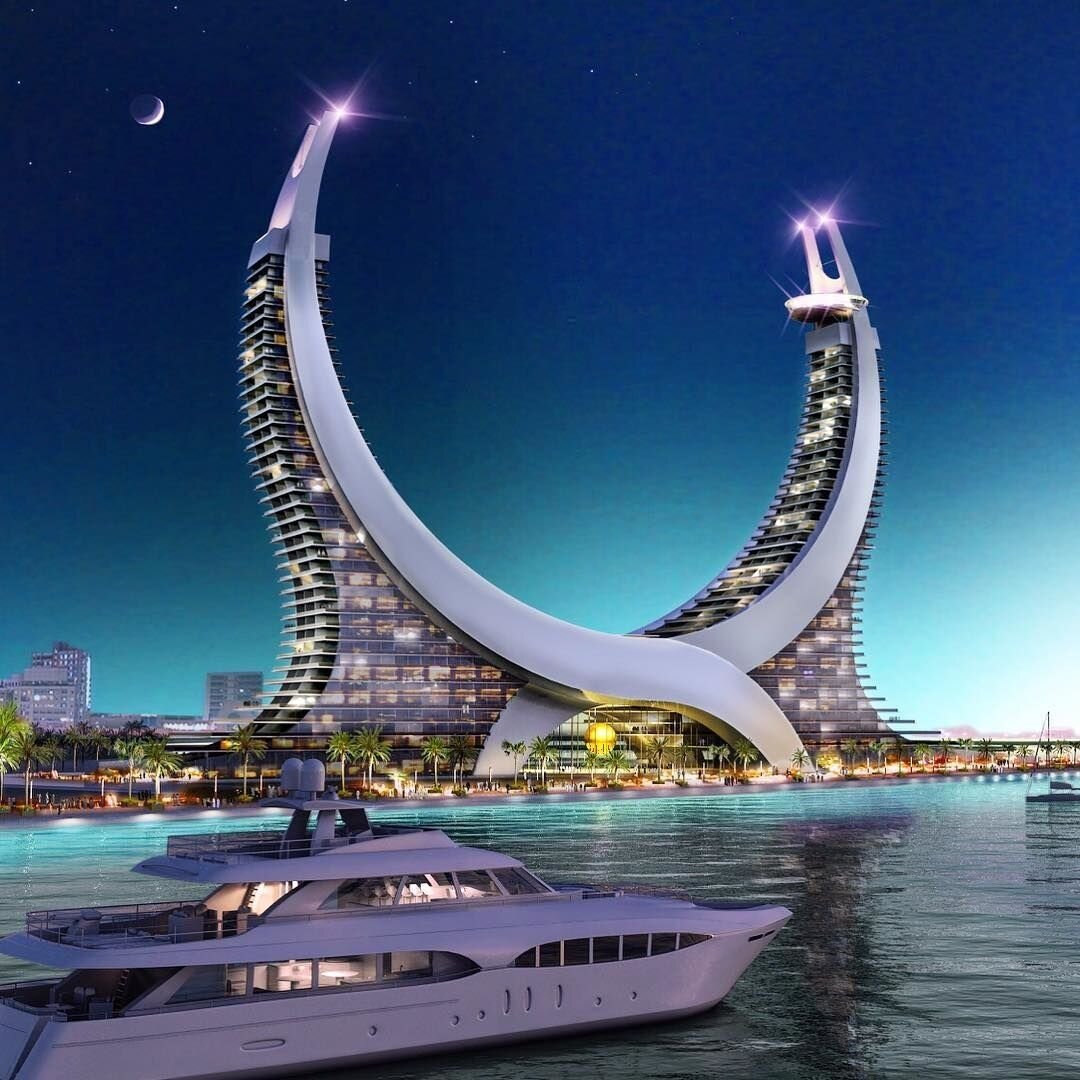

A1S Group Export Manager Mark Dougill was particularly fulsome in his praise for Al Thuraya our Qatari partners who initially secured the Doha fire shutter package. “The Katara Towers will undoubtedly become one of the world’s most iconic structures,“ he said, “I am delighted to see our Flameshield shutters installed as a pivotal part of the fire strategy.” The imposing structure is an architectural translation of Qatar’s national seal representing traditional scimitar swords.
Flameshield fire shutters, in particular Flameshield FS240 JMs are to be manufactured and installed as part of the fire strategy for the John Lewis £20 million fit out in Edinburgh and Flameshield EW120 fire curtains are required for the (subject to NDA) Museum in London. This product retains the highest radiation performance for a UK fire curtain and is C1 class tested which is why it was selected by the design team at MCLH.
A1S Group Engineered Fire Curtains in the Science Museum
Kensington’s world-famous Science Museum houses more than 300000 objects over seven floors.
Kensington’s world-famous Science Museum houses more than 300000 objects over seven floors. To John Logie Baird’s test subject “Stookie Bill”, the Apollo 10 command module, Charles Babbage’s Difference Engine No 1, Crick and Watson’s DNA model and the first Apple computer, you can now add an A1S Group Flameshield BS 8524 fire curtain. So, congratulations to all the team at A1S, our engineered life critical fire safety equipment has now joined the pantheon of global science history.
On reflection, maybe we are getting a little bit ahead of ourselves. As it turns out that the Flameshield 120 minute integrity curtains aren’t exhibits after all. Following a competitive and detailed compliance process, they were chosen to form a pivotal role in the fire strategy for the museum’s state of the art IMAX cinema. Another great win for the A1S UK fire curtain supply and installation team, backing up our mantra, always compliant, always competitive.
Some Common Sense Guidance For Fire and Smoke Curtain Procurement
Better Safe than Sorry – some common-sense suggestions to cut through the smog of fire and smoke curtain procurement and guidance to avoid expensive and hazardous procurement pitfalls.
Better Safe than Sorry – some common-sense suggestions to cut through the smog of fire and smoke curtain procurement and guidance to avoid expensive and hazardous mistakes.
It’s always great to talk to clients, but in response to the same questions and scenarios coming up time and time again, it is worth hosting a few words on the dos and don’ts of fire curtain procurement, based on our experience as manufacturers and installers of fire and smoke curtains.
I am getting more and more feedback, especially on Design and Build contracts from Tier One Commercial Managers and Quantity Surveyors, that they haven’t budgeted enough, (despite our package being the most competitive) for the product and install package because their estimating team did not understand the permutations of products and British Standard options available and hadn’t understood the governing design of the fire strategy and curtain specification. Estimators are going to market and capturing costs that can sometimes increase dramatically because the products quoted are not in line with the building’s fire strategy. Absolutely no blame there. Fire and smoke curtains are notoriously difficult to get right. Often there are clues within a fire strategy, that unless you are used to them can trip you up. In our experience, a fire and smoke specification does not always align exactly with the fire strategy. There are often ambiguities and inconsistencies that require clarification and in every case before we price any project, we make sure that what is being quoted is going to be signed off by building control.
In recent months, the issue has become almost endemic and we are increasingly being asked to replace recently installed fire curtains from other manufacturers and installers as they did not meet ALL of the specification/British Standard testing requirements. For those who already know this then forgive the statement, but there are potentially hundreds of combinations of British Standard, functionality, integrity, radiation, ancillary, third party accreditation, parameters and related requirements that could be required for your project. Even worse than under-budgeting is if you get this wrong, you as a contractor could well be replacing your recently installed fire curtains, dismantling and rebuilding structures, delaying practical completion and warring with your end client on the legalities of catch all clauses such as “all current and relevant standards” in your previously negotiated JCT/NEC contract. Most worryingly of all, your building may not be as safe as it should be.
As manufacturers and installers, we are not here to devise a fire strategy, nor are we qualified to do so. As such, this article is orientated towards those who are involved in the contractor procurement process, and to those who have to interpret client design requirements and procure on their behalf. Our role is to thoroughly scrutinise any architectural specification, fire strategy, or building control requirements, references and inferences, then marry (if our product range allows, and it almost certainly will), THE CORRECT type of fire curtain, control systems and ancillary devices to your client strategy. To that end, it is imperative that we understand and cover off as a minimum your:
1) British and or European testing standards required i.e. BS 8524 or BS 1634
2) Required fire integrity to BS 1634-1
3) Radiation requirements in kw/m2 (for tenable conditions on the unexposed face of the curtain)
4) Whether smoke control to BS 1634-3 is required
5) Control functionality, i.e. one stage, two stage, time delay, etc.
6) Ancillary requirements, i.e. egress, and access switches, obstruction warnings and beacons
7) Fire curtain parameters and whether horizontal or vertical
8) Substrate we are fixing to
9) Any deflection stipulations
10) Required third-party accreditation hosted on Notified Body websites (so transparency and in the public domain) i.e. IFC certification for BS 8524 or Warrington Certifier for BS EN 1634-1
11) Installation, commissioning and servicing protocols to BS 8524-2 or BS 1634. Any required third party installer scheme.
If we were to get any part of this process wrong, no matter how seemingly minor, things can and unfortunately do, unravel very quickly. We also appreciate that our clients are probably contractually obliged to procure the correct system on behalf of their end client so unless we at the very least discuss all possible permutations with them, we are not doing our jobs properly. Sometimes disparities between the strategy and the specification may be legally the contractor’s responsibility to iron out. Similarly, if any fire curtain manufacturer does not discuss ALL of the above with you, in my personal opinion, they may well be introducing unnecessary commercial and life safety risk to your project.
For pricing and a discussion on your fire and smoke curtain projects email :
info@a1sgroup.com
A1 Shutters Limited assume no responsibility or liability for any errors or omissions in the content of this site. The information contained in this site is provided on an "as is" basis with no guarantees of completeness, accuracy, usefulness or timeliness. Analysis of product properties and their suitability for any given application should always be undertaken and confirmed by competent professionals.
All Guns Aren’t Blazing as A1S Group Wins Fire Curtain Package for London’s Imperial War Museum.
All Guns Aren’t Blazing as A1S Group Wins Fire Curtain Package for London’s Imperial War Museum.
A combination of compliance and price has helped the A1S Group win the fire curtain package for the Imperial War Museum’s new creative hub annex. The main contractor Reds 10 selected A1S after a careful review of compliant submissions.
The requirement was for a fire curtain to BS 8524, specifically with third party accreditation by an external UKAS accreditation body (in this case IFC) and the Flameshield 8524 fire curtain was selected because of its ability to meet the required EW 60 classification of 120 minutes integrity performance and 85 minutes radiation at 15kw/m2. Careful analysis of the required BS 8524 annex testing, particularly C1 class Annex D durability testing, again satisfied the client that the A1s submission was the clear choice.
Winning this prestigious contract is another important contribution to the A1S group’s impressive portfolio of active fire barriers within museum and gallery building structures. Recent successes include, the National Archive, the British Postal Museum, the British Vehicle Museum and necessary replacement works for existing non-compliant fire curtains at Liverpool Museum.
A1S Group Release Flameshield Fire Curtain BIM Models.
Revit files are NOW available including relevant COBie data for Flameshield 8524 fire curtain and Flameshield 8524S fire curtain with smoke seals.
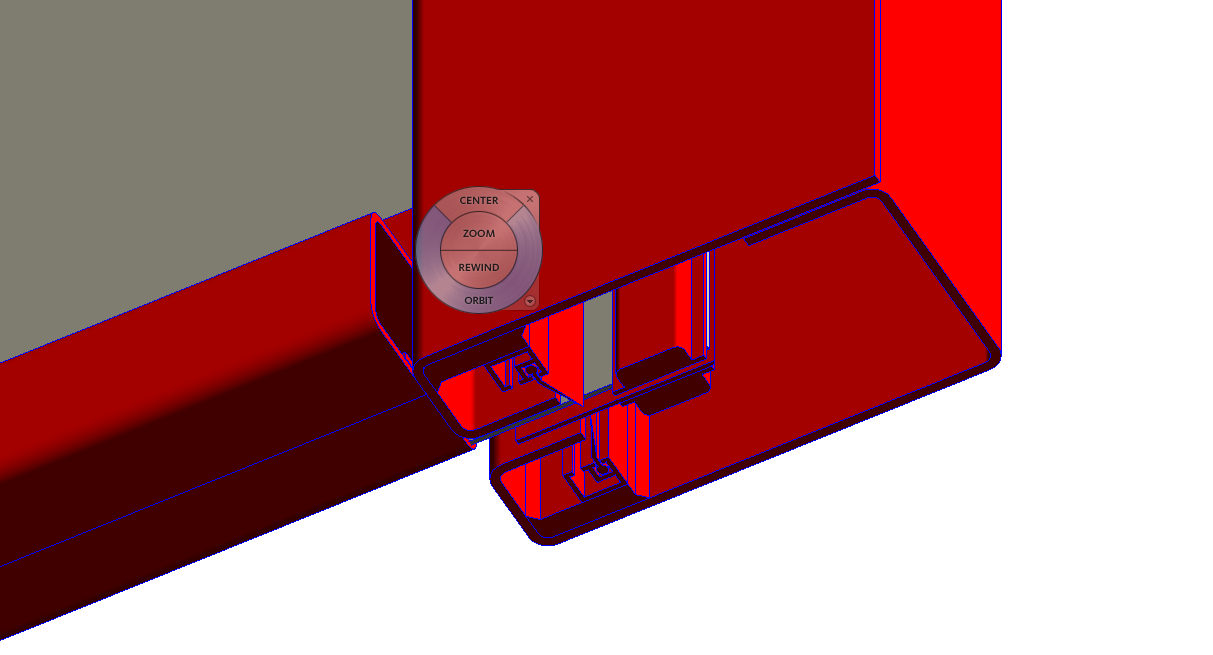
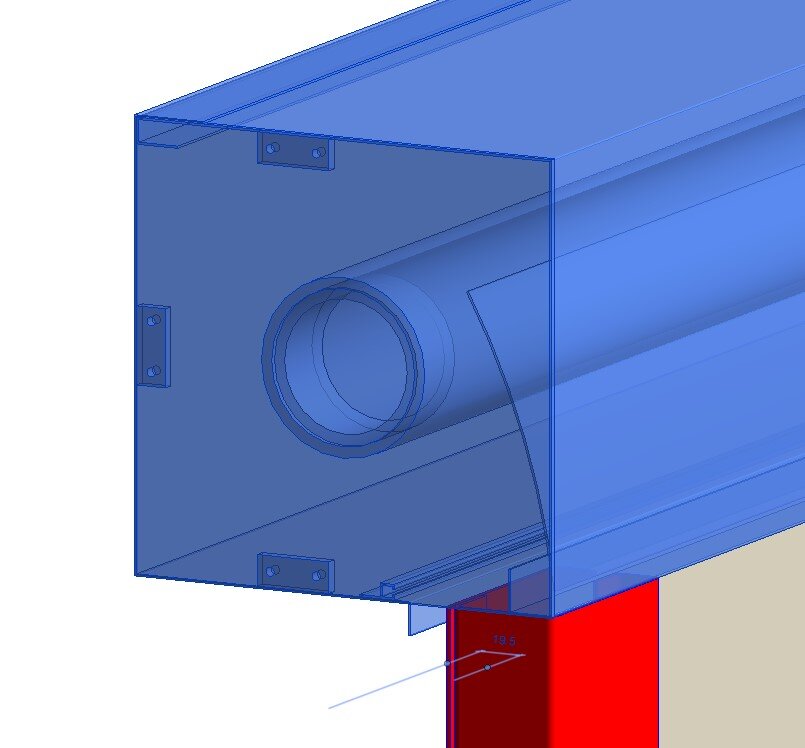
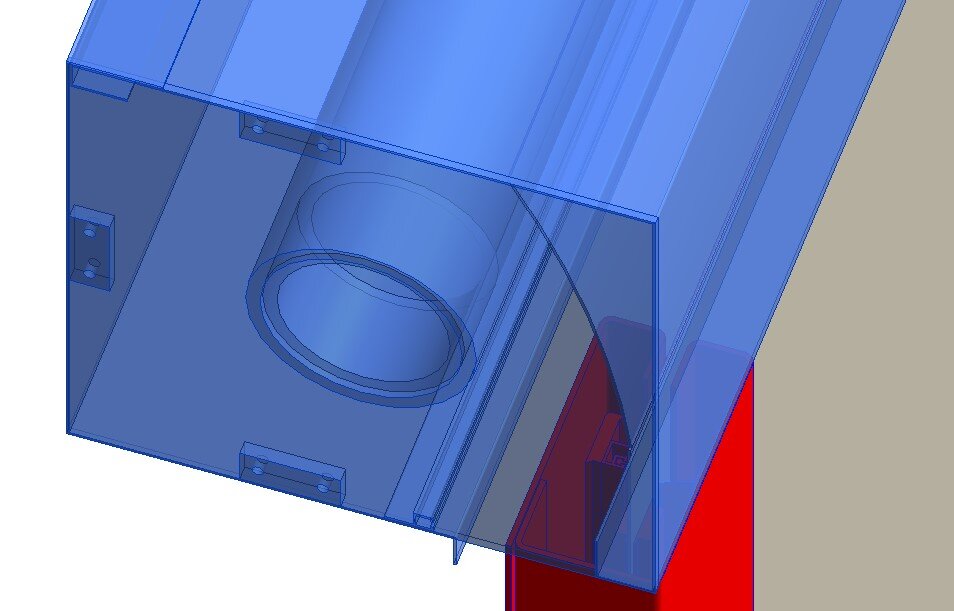

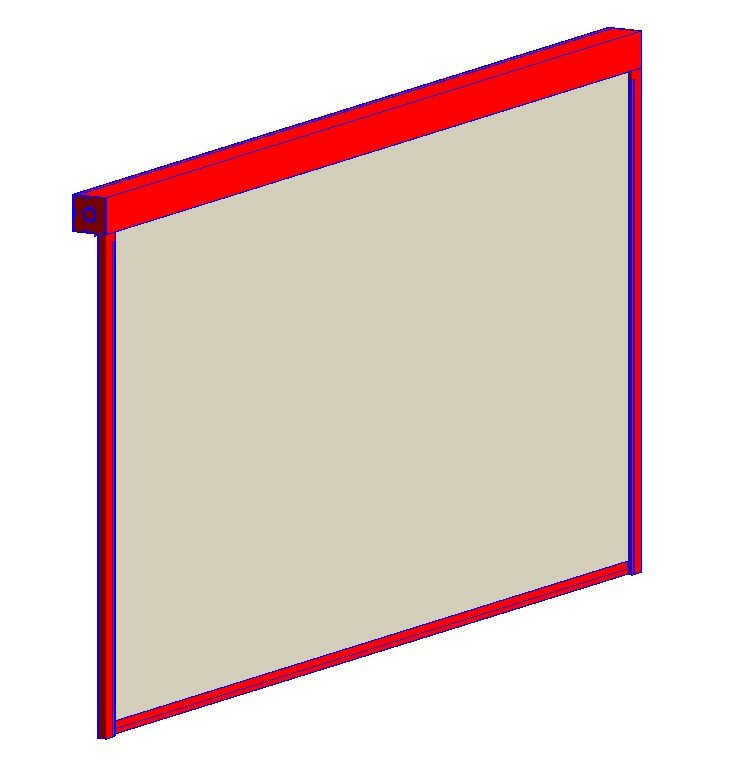
The Difference Between Fire Curtains accredited to EN BS1634 and BS8524
Of course with the pricing differential between an EN BS 1634 curtain and a BS 8524 we are regularly asked what is the difference between the two relevant UK Fire Curtain standards in the UK. A recent client email via Arup pointed out the primary issue succinctly. “BS 8524 is the UK standard for an ACTIVE fire curtain.” And the active functionality and testing of a fire curtain is a good place to start if you wish to understand the differences between the two standards.
Previous to the publication of BS 8524, the only test requirements for Fire Curtains were their fire resistance and smoke control characteristics, i.e. integrity and radiation, Sa smoke classification and the now defunct insulation zone. As a company our fundamental argument was always that you can achieve the performance requirements as stipulated by Pas 121, BS 476 and EN BS 1634-1 with furnace testing, but that simply is not enough, because it is critically important to cyclic test fire curtains and smoke curtains to at least C1 Class i.e. a minimum of 500 cycles.
We are aware of test data from UK fire curtain manufacturers with non existent cyclic testing or where fabric fire curtains have been subjected to 25 manually operated and opening and closing cycles. A simple examination of the fabric, guides and poppers will often expose that the material within its build structure simply isn’t malleable enough to continually roll up and down. Yes it achieved a fire resistance rating during furnace testing, but how do you know you aren’t buying a cheap saucepan? Use it once and next time you burn your omelette. Our point is that if you have not replicated the life cycle of a fire curtain, how will you ever know that it will perform after commissioning, regular alarm inspections and mandatory servicing. You won’t. Which is why we are inundated with requests to replace non cyclic tested competitor curtains. The old adage, buy cheap buy twice comes to mind. But the proven robustness and long term performance of the product is not the only issue here. There is also an absolute requirement for this critical life safety equipment to properly function in an emergency. So difference one, a curtain to BS 8524 assures cyclic testing and thus reliability throughout the ten year plus life cycle of a fire curtain and life critical functionality in deployment situations.
Secondly BS 8524 fire curtains must pass an impact test to BS 5234-2, SD classification. BS 5234: Part 2 comprises a series of tests which examine a partition systems' suitability for a given partition duty. In the case of a fire curtain a fifty kilogram weight is swung into a central point of the curtain both before and after the cyclic test. The curtain must not leave its guides. This is purely to replicate the possibility of an individual falling or leaning into the curtain.
The third significant difference, and the part of BS 8524 that proved most difficult for manufacturers to achieve is the motor test (Annex G) to 400 degrees for thirty minutes. The issue for a fire curtain has always been once the fire breaks out, the immediate ceiling vicinity of the motor and head box will have the highest temperature. So why not replicate 400 degree conditions for 30 minutes? This is exactly what BS 8524 dictates. Only once the motor has been tested in a furnace to a minimum of 400 degrees for a minimum period of 30 minutes with a minimum of 12 cycles is it deemed to pass. And this is particularly critical for emergency services who will require the motor to still function once the access switch is activated or when the control panel is set for time delayed descent.
With the increasing use and requirement for ancillary equipment to give fire curtains additional functionality it makes sense to fully test each individual ancillary item in conjunction with the fire curtain and that is what Annex H now demands. Life safety fire curtains quite simply should not acquire additional functionality through untested bolt-ons. So whether it be egress or access switches, single or multi beam obstruction warnings, or smoke and heat detectors, a client can rest assured that the ancillary items have to be fully tested with a BS 8524 fire curtain.
Deployment speed must now test between (Vertical Curtain): ≥0.06 m/s at any height; ≤0.15 m/s below 2 m (Horizontal Curtain) : ≥0.06 m/s at any height; ≤0.3 m/s below 2 m. Too slow and the requisite integrity will not be achieved in a timely manner, too fast and the fire curtain is a danger to those under it.
The above changes and test requirements are given in the performance requirement table 5 of BS 8524-1. The table also includes further mandatory testing including reaction to fire. Fabric used in the construction of a barrier assembly shall be tested in accordance with BS 476-6 and BS 476-7 to achieve a Class 0 or Class 1 rating, or BS EN ISO 1716 or BS EN ISO 1182 and BS EN 13823 to achieve a minimum of B-s3,d2 (Class 0 equivalent) or a minimum of C-s3,d2 (Class 1 equivalent). Deflection data is also to be assessed.
All of the above testing is covered in one comprehensive UKAS accredited third party certification scheme from IFC to BS 8524-1. Our certificate number is IFCC 1542. This scheme assesses the entire testing regime and all relevant performance criteria. Increasingly UK building controls now publish documentation stipulating BS 8524 and third party accreditation from IFC as a requirement for fire curtains and we are aware of curtains being condemned as non-compliant without such documentation.
For further information on A1S Group range of BS 8524-1 Fire Curtains and BS 8524-2 Installation, please contact enquiries@a1shutters.co.uk or call 01204 383839







